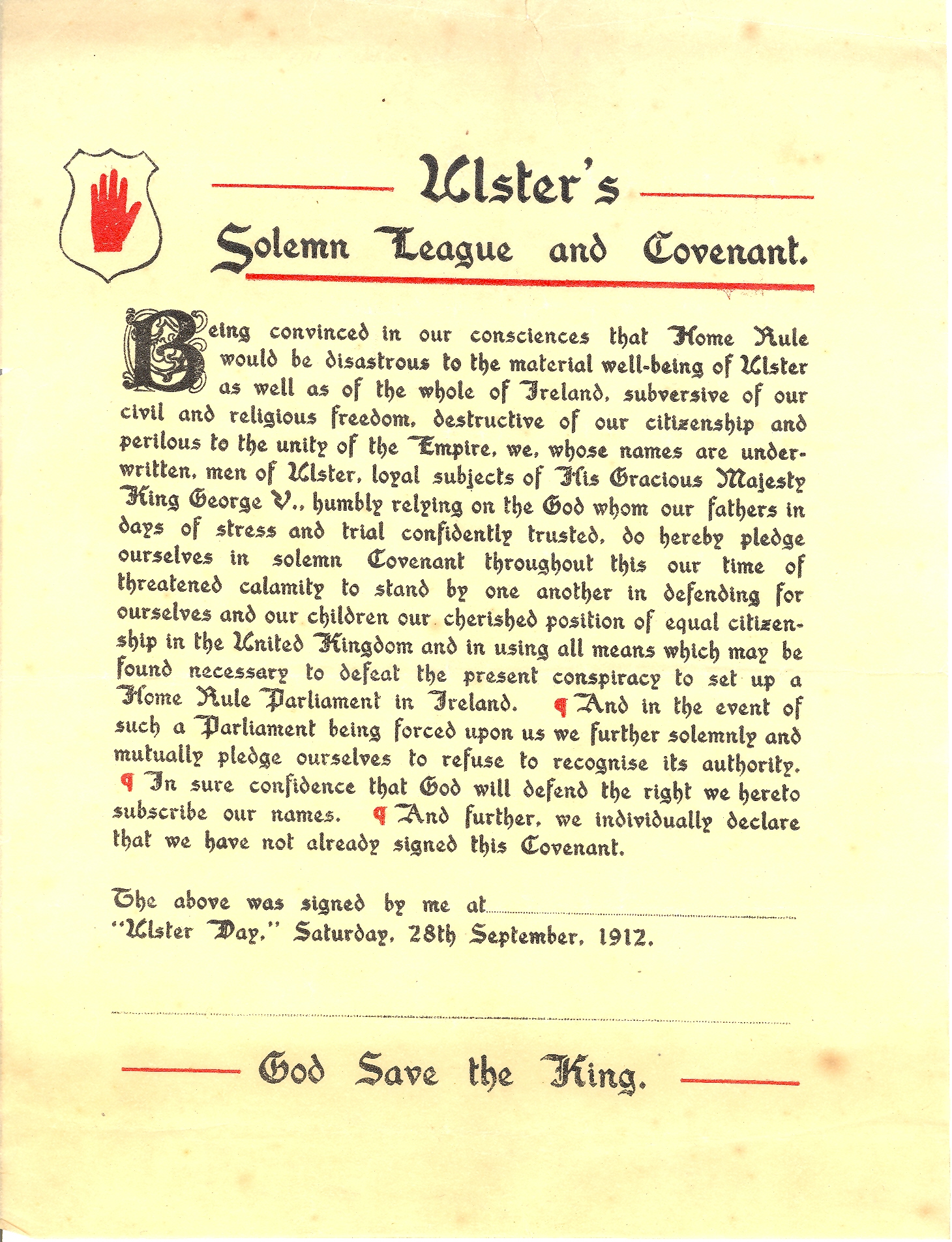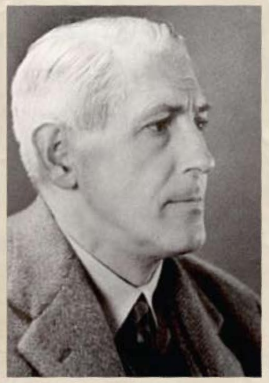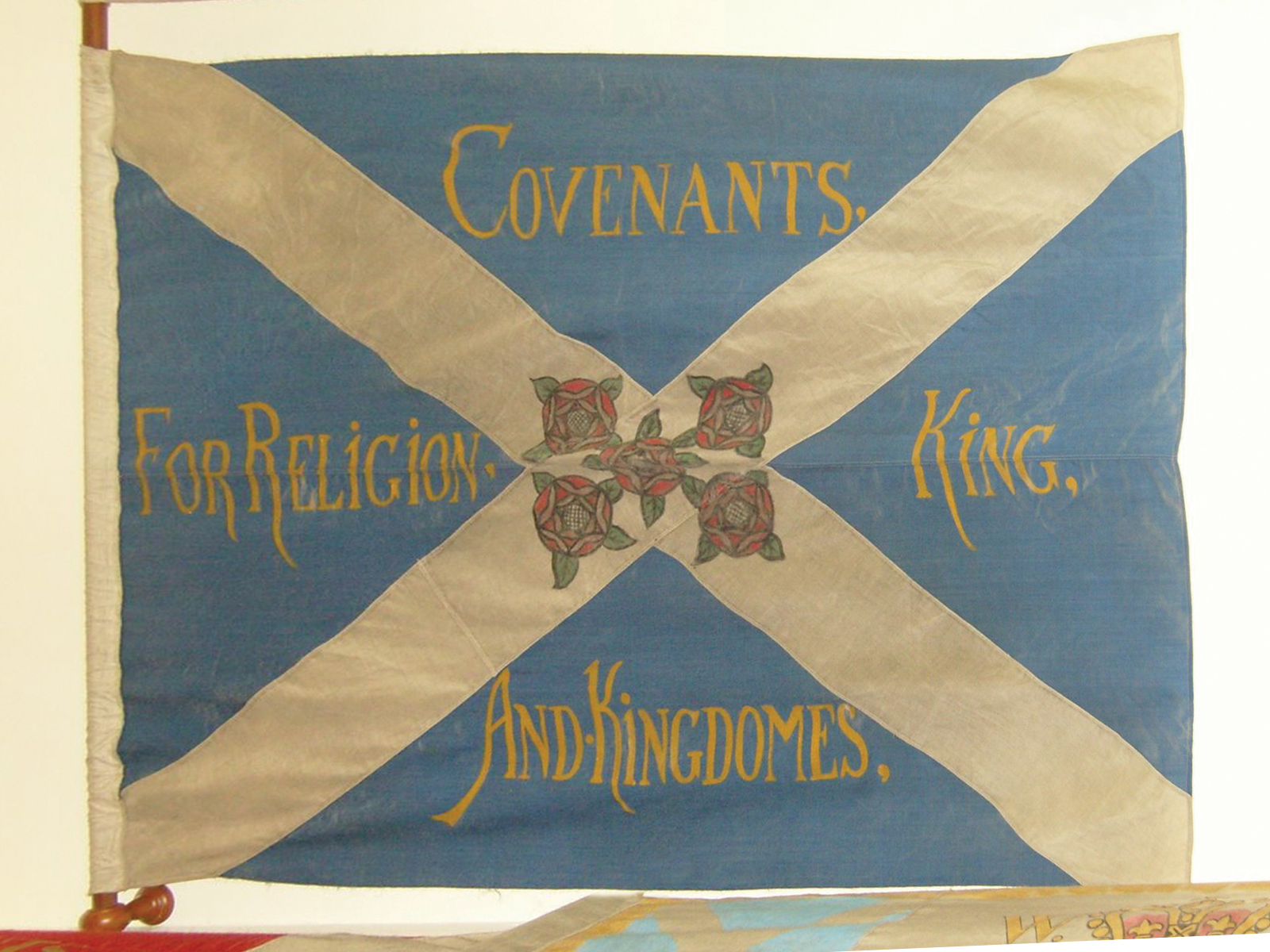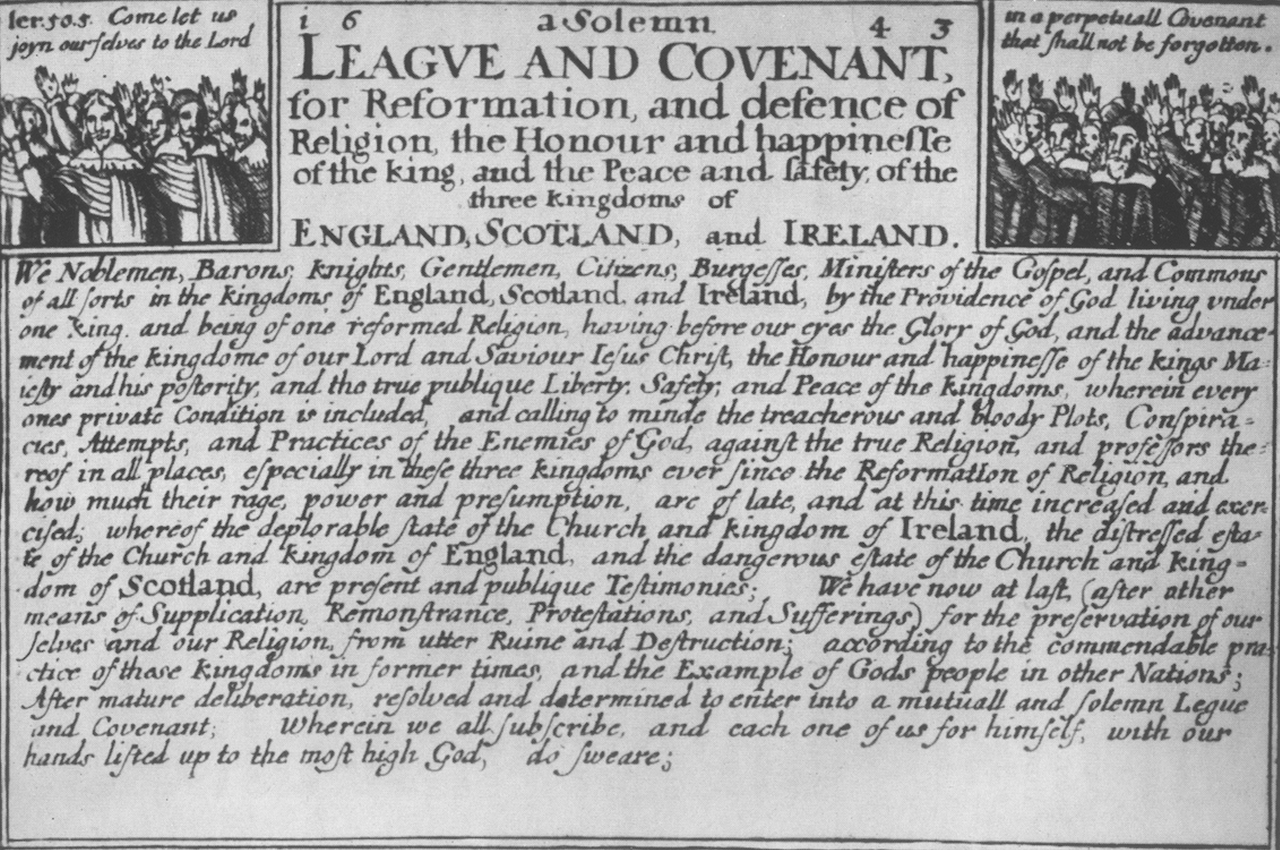

“Ulster Day,” organised on 28th September 1912, was designed to convince public opinion in the United Kingdom and throughout the Empire that Ulster Unionism was determined to resist Home Rule, at whatever cost. The events of the day were built around the signing of Ulster’s Solemn League and Covenant, a condensed, indeed terse statement of the reasons for Ulster’s rejection of Home Rule. The text committed those signing it to using “all means that may be found necessary” to resist the implementation of Home Rule. It was interpreted as a formal announcement by the Ulster Unionist leadership that they were prepared to enter into armed resistance against the British Government.
The decision to focus resistance to Home Rule on a “covenant” was a clear cultural statement. The idea, found throughout the Bible, of a solemn binding agreement between God and “his” people, had a major impact on the reformed tradition. As a means of galvanising popular commitment to a political and religious cause, the covenant became a hallmark of Scots Presbyterianism. Thus, on three occasions, in 1581, 1638 and 1643, the Scots entered into a covenant to defend their system of Church government against papal authority and rule by bishops. Two of these covenants, the National Covenant, 1638, and the Solemn League and Covenant, 1643, were administered to the Presbyterian settlers in Ulster. Those who committed themselves to these Covenants were known as Covenanters. As we saw in Modules 1 and 2, the influence of the Covenanters extended deep into Ulster Presbyterian society.
When it was decided to attempt to produce a document that would encapsulate unionist resistance to Home Rule, the leaders tapped into this cultural foundation. Thomas Sinclair, whom we came across in the preceding Example in this Unit, reworked the archaic wording of the original documents and produced a dense, clear text which reflected the efficiency and urgency that characterised unionist material at the time.
IMAGE: Unsigned copy of the Ulster Covenant Public Domain: https://commons.wikimedia.org/w/index.php?curid=7418230.


The signing of the Solemn League and Covenant was an immense strategic success. Carefully managed signings were organised all over Ulster, most notably in Belfast City Hall where Carson, the unionist leader, was the first to sign in the glare of the national media. Ulstermen who lived outside Ulster were also invited to sign the Covenant on Ulster Day. This was notably the case in Scotland where the local Unionist associations organised signings in several locations, notably in Lanarkshire and around Glasgow where over 7000 people signed. All told, the Ulster Covenant was signed by 218,206 men, while some 228,991 women signed a parallel “Ulster Women’s Declaration.”
The following poem, “The Blue Banner,” written by William Forbes Marshall (1888- 1959) was published in The Northern Whig, Belfast’s Liberal Unionist paper, to coincide with the signing of the Covenant on Ulster Day. It plays on the associations with the Scottish Covenants and, in so doing, underlines the deep cultural and historical connections between the Ulster Scot and “the land from whence [he] came.”
Marshall, who was 24 at the time, was to become a well-known author, publishing collections of poems such as Verses from Tyrone, a novel, Planted by a River (1948), and an important booklet, Ulster Sails West (1943), outlining “the part played by Ulstermen in building the United States.”
The Blue Banner
Firm-leagued we face the future, tho' the road be dark and steep;
The road that leads to honour is the lonely road we keep.
And, though all the world forsake us, this is the course we hold.
The course our fathers followed in the Cov’nant days of old.We fain (1) would look for comfort to the land from whence we came.
Where still abide our kith and kin and clansmen of our name,
Where lives were deemed of small account by valiant men and true.
For Christ, His Crown, and Cov’nant and the war-worn folds of blue.Long years have been and faded since the old-time banner waved.
See! how it flashes once again ere dangers must be braved!
“The Cov’nant oath we now will swear that Britain may be told
We stand for faith and freedom and the memories of old.“For all they died for gladly in the homeland o’er the sea,
For blood-won rights that still are ours as Ulsterborn and free,
For the land we came to dwell in, and the martyrs’ faith we hold -
God grant we be as leal to these as were the men of old.W.F.M.
(1) Gladly, willingly.
IMAGE: W. F. Marshall. Source: USCN booklet, The Life, Work and Legacy of Rev. W. F. Marshall, available at: http://www.ulsterscots.com/uploads/USCNWFMarshall.pdf


[NB: Frames noted in Module 2 are indicated in heavy print.]
As often in political material of this sort, the poem, published in the Northern Whig on Saturday 28th September 1912 (Ulster Day), draws a parallel between a dramatic event or period in history - “the Cov’nant days of old” - and the contemporary situation. The reference is to seventeenth-century Scotland and to the religious persecution of the Presbyterians who had signed the Covenant in defence of the Presbyterian Church and its form of church government.
Throughout the poem, the focus is very much on the Scots origins of the contemporary unionists who are represented as modern-day Covenanters. Marshall returns to this theme at several points throughout the poem. Scotland is identified as “the land from whence we came,” or, “the homeland o’er the sea.” Once again, as we have seen elsewhere, the author insists on the fact that this historical connection is still as valid as ever: Scotland is the place “where still abide our kith and kin and clansmen of our name.” This emphasis on Scotland as country of origin (kith and kin) is a clear cultural choice on the part of the poet. Whereas much unionist material will at least pay lip-service to parallel English roots, the author does not hesitate to go all-out for Scotland as the exclusive frame of his origin myth.
Marshall, who had trained at the Presbyterian College in Belfast, and who was to be ordained into the Presbyterian Church the following year (1913), sees this Scottish identity as being inseparable from Presbyterianism. However, he specifically chooses the Covenanters - often portrayed as among the most radical, most uncompromising elements in the Presbyterian family - as his models for the contemporary Ulster unionists. The fact that Ulster unionism should have chosen to produce its own Covenant, inspired from the earlier Scottish model, is of course in the minds of everyone reading the poem in the Northern Whig on Ulster Day. But, as we had already seen in Module 2, this choice merely reflects the close ties that existed historically between the Covenanters and the Presbyterian communities in Ulster. People like the visionary 17th century preacher, Alexander Peden, frequently visited Ulster to escape government persecution in Scotland.
IMAGE: The Blue Banner. Image Courtesy of Ulster-Scots Community Network.


[NB: Frames noted in Module 2 are indicated in heavy print.]
Besides these religious or historical considerations, another reason why Marshall chooses to focus on the Covenanter is that it allows him, and, by extension, the broader unionist campaign, to tap into the pathos surrounding the Covenanter as victim.
Many of the stories in popular representations of the Covenanters focus on their sufferings at the hands of a cruel government. Everyone in Ulster would have heard accounts of “the Killing Times” that stirred up empathy for the victims and outrage at the perpetrators of what was seen as unjustified State oppression. The familiar folklore of the Covenanters therefore had the advantage of providing sharp images of “goodies” and “baddies” that could be easily transposed to the contemporary situation. In this scenario, the authorities in London did not come off well. Tuning in to this broad story and the emotions that it generated allowed the unionists to take on the role of victims, as it were, by proxy.
Other aspects of the Covenanter narrative make it ideal as a model for contemporary unionism. For example, when Marshall refers to “the lonely road we keep” or when he says, “though all the world forsake us,” he is tuning in to another central element of the Covenanter imaginary, i.e. the idea that they are a tiny minority – the Covenanters frequently used the biblical notion of “the remnant” – with few to support them but themselves, but who, nonetheless, are sure of ultimate victory because of their commitment to “Christ, His Crown, and Cov’nant.”
Finally, the choice of the word “leal” in the final line of the poem requires a brief comment. Firstly, the word is Scots, an adjective meaning “loyal” or “faithful” in terms of allegiance or duties. The fact that Marshall chooses this, the only word of Scots in the poem, suggests that he means a particularly Scots brand of loyalty. Given the context, the reader is to understand that the loyalty involved is to the Covenant - here, Ulster’s Solemn League and Covenant. Like their ancestors, the unionists are represented as “firm-leagued,” meaning that they have chosen to bind themselves by a solemn oath to resist Home Rule. Their loyalty therefore is specifically towards their own political project which, like “the men of old,” they see as being placed under divine protection.
As so often before, this reading of loyalty places them at odds with the Government of the day. As we shall see, the notion of the “loyalist rebel” was to take on increasing importance in the following months with the creation of the Ulster Volunteer Force.
IMAGE: Opening section of the Solemn League and Covenant, 1643. https://earlofmanchesters.co.uk/the-treaty-against-a-king-the-1643-solemn-league-and-covenant/